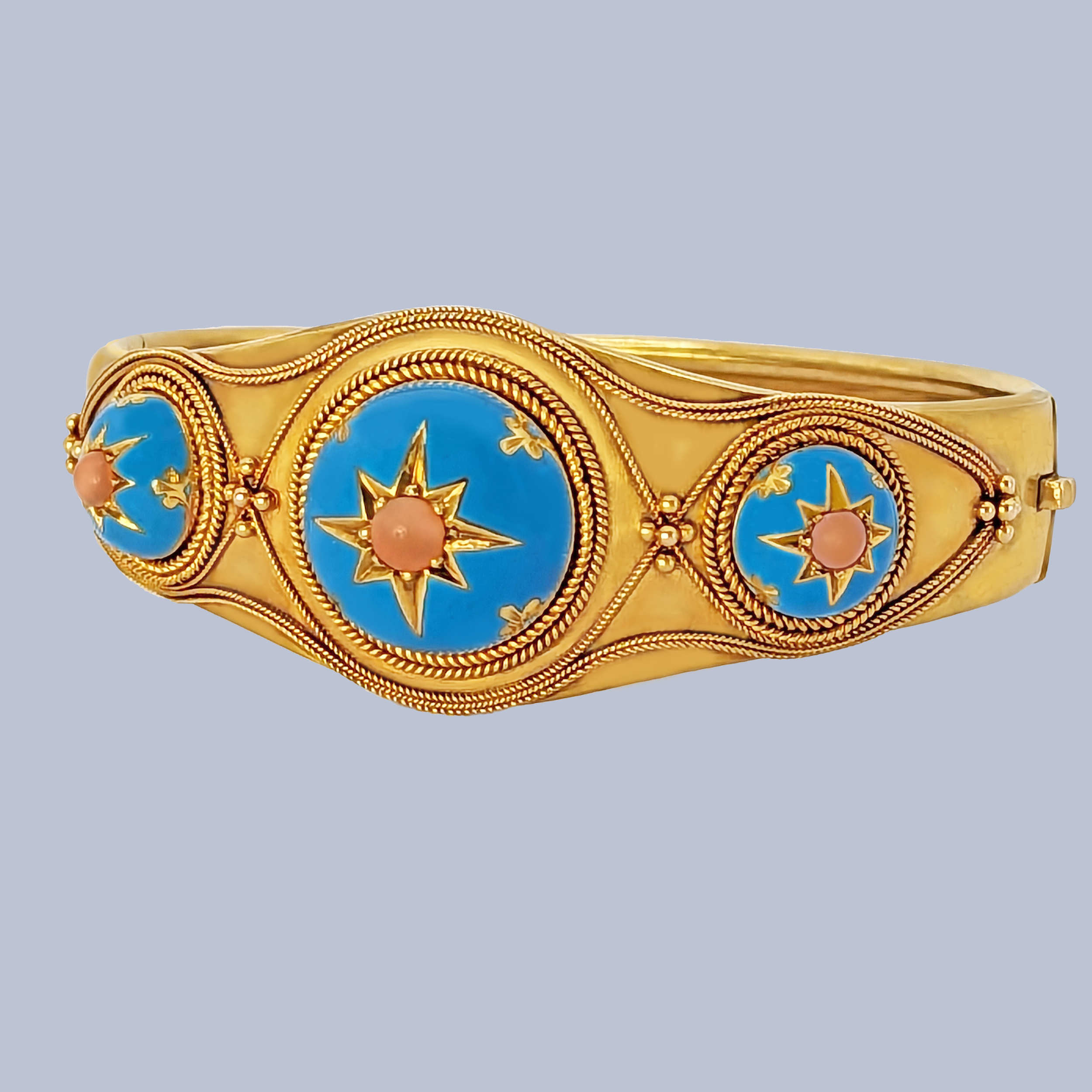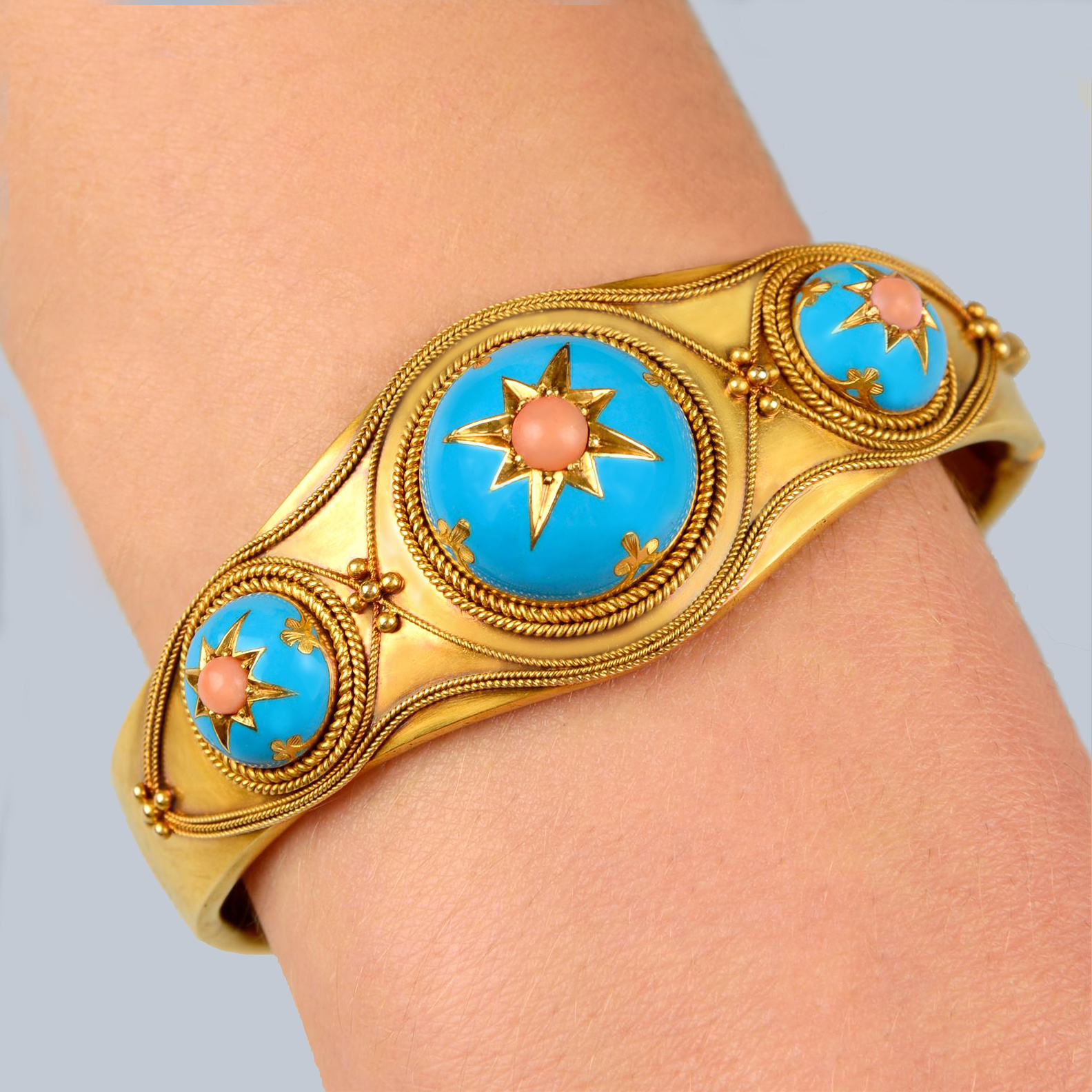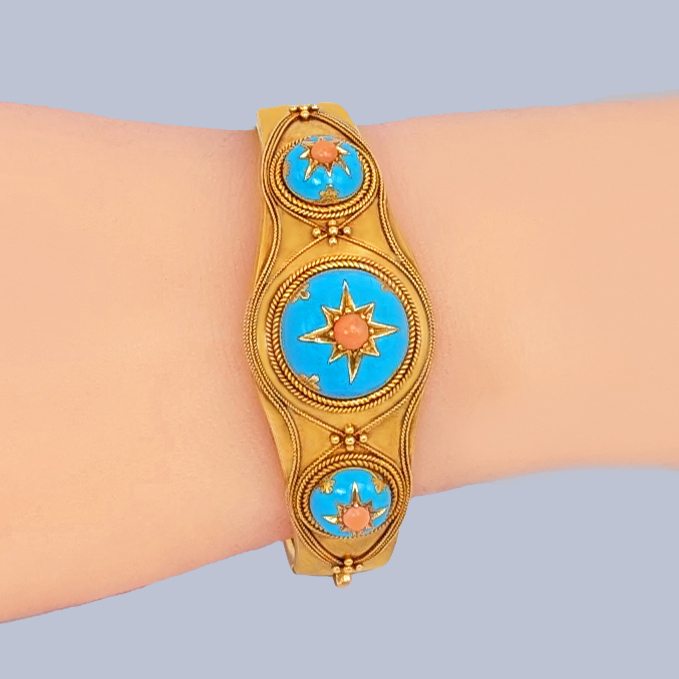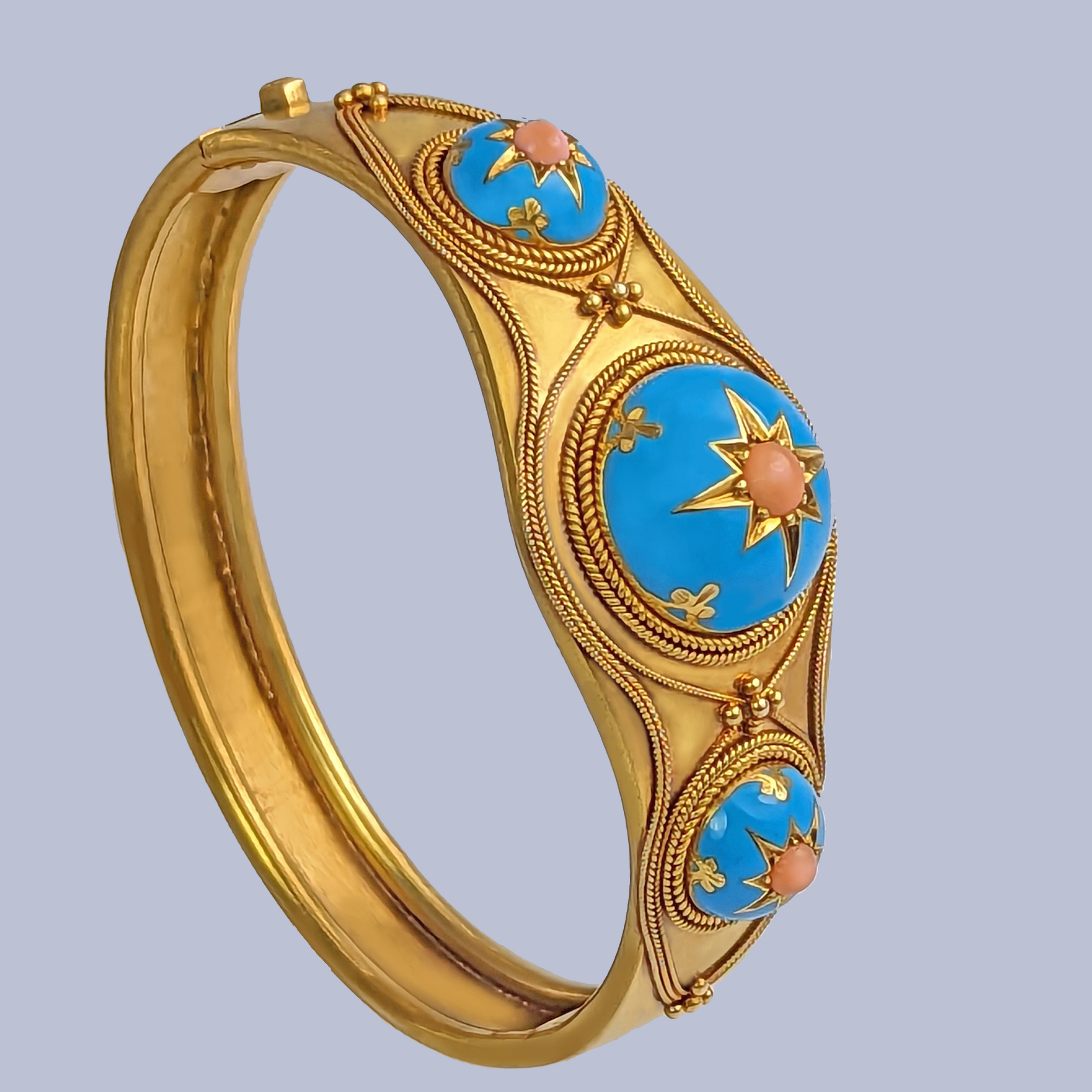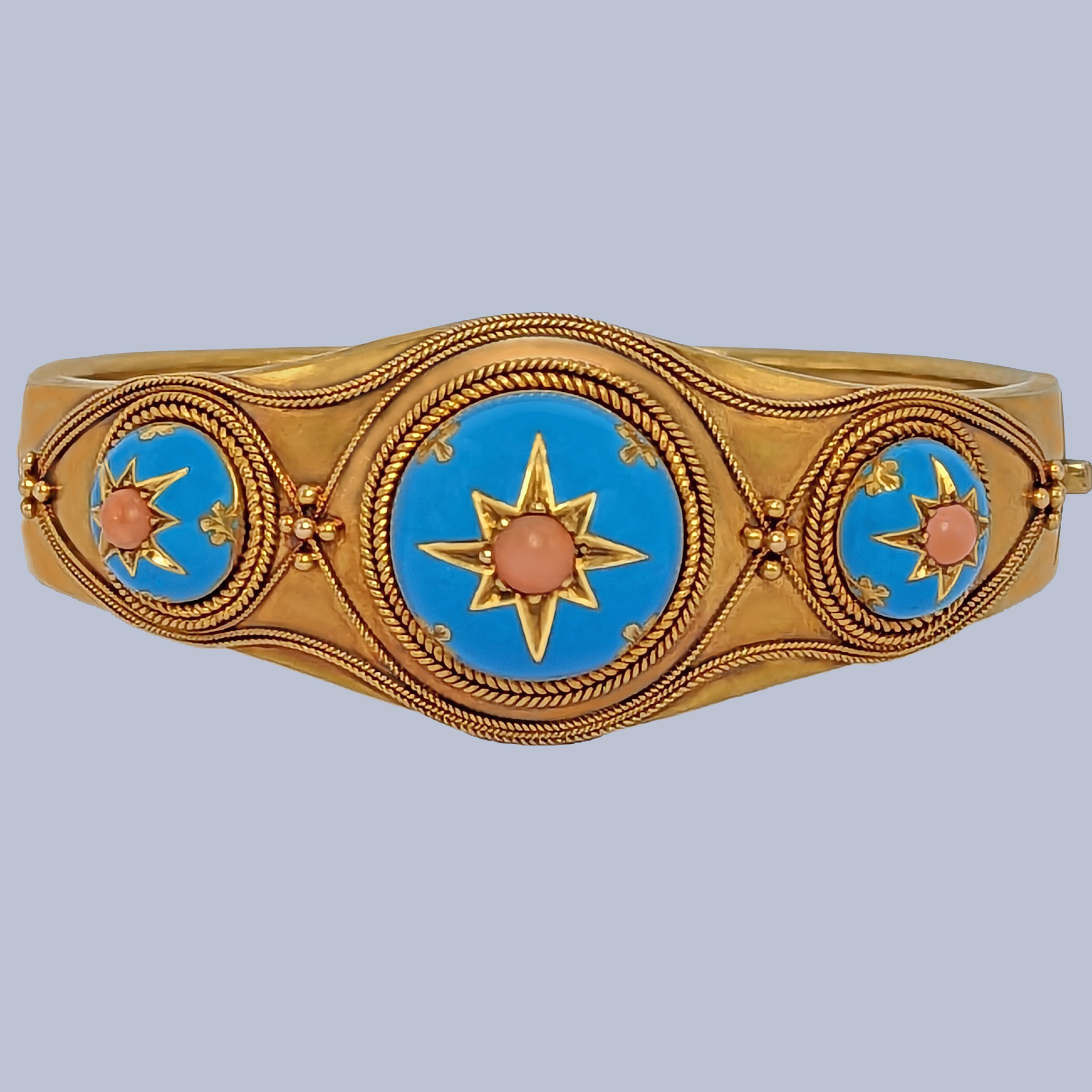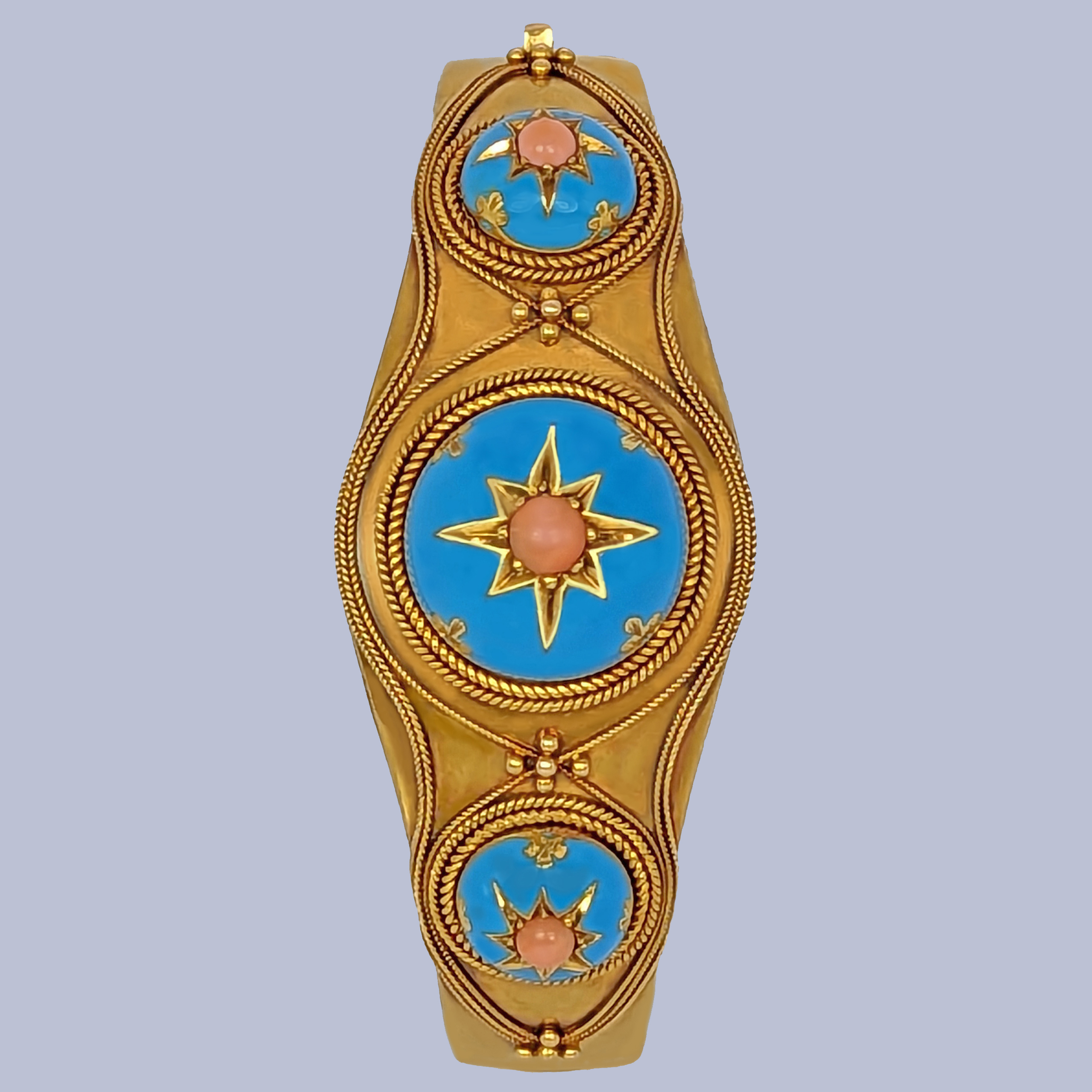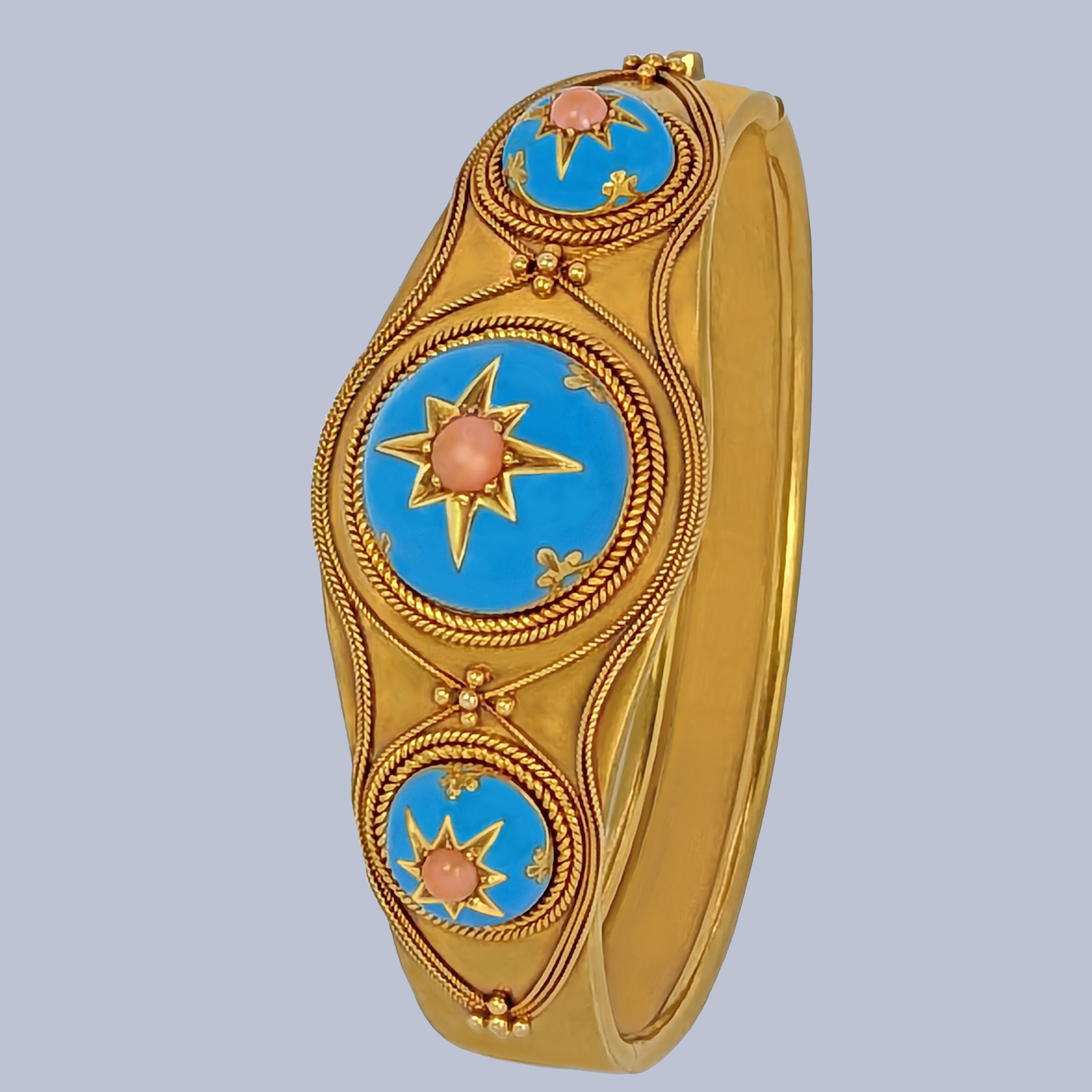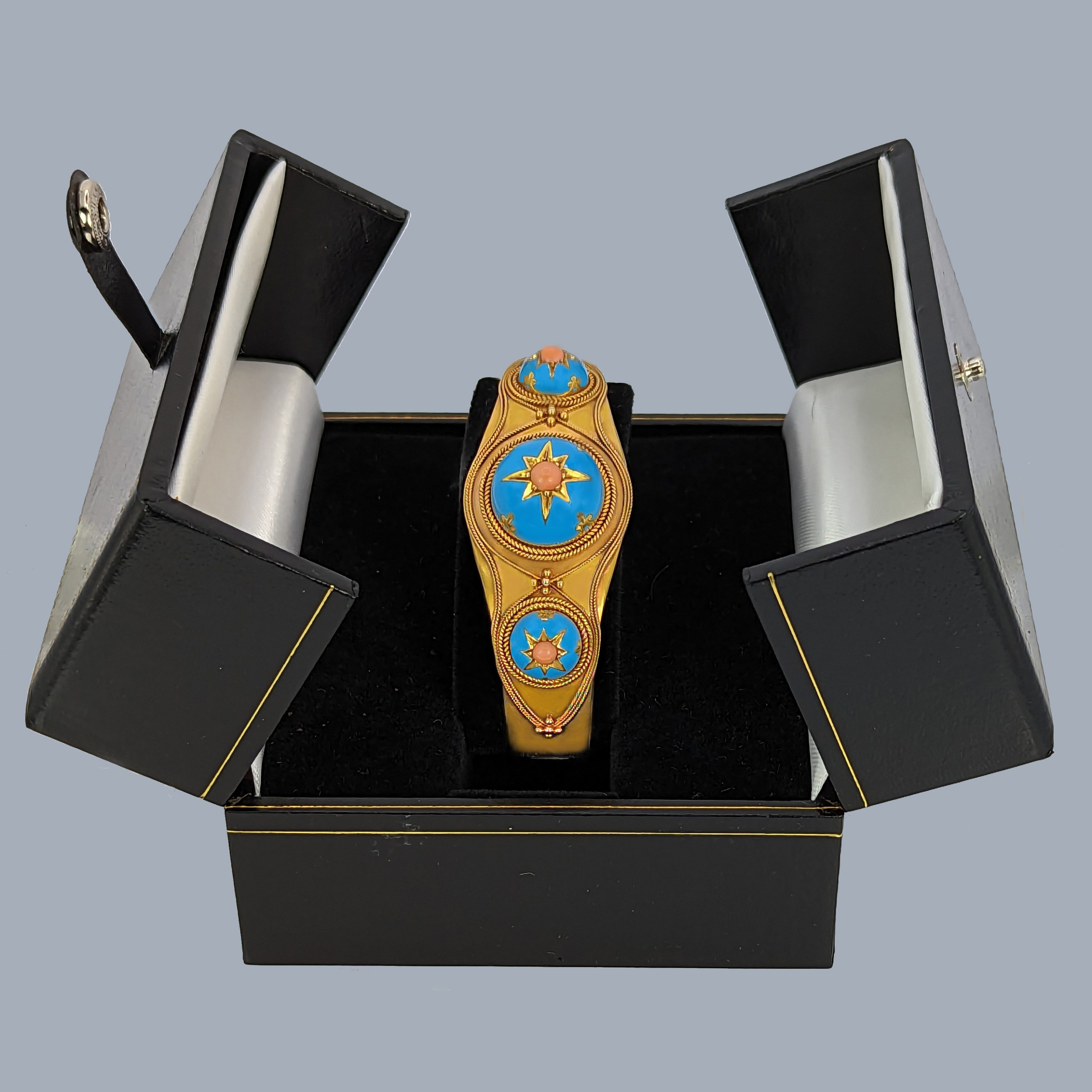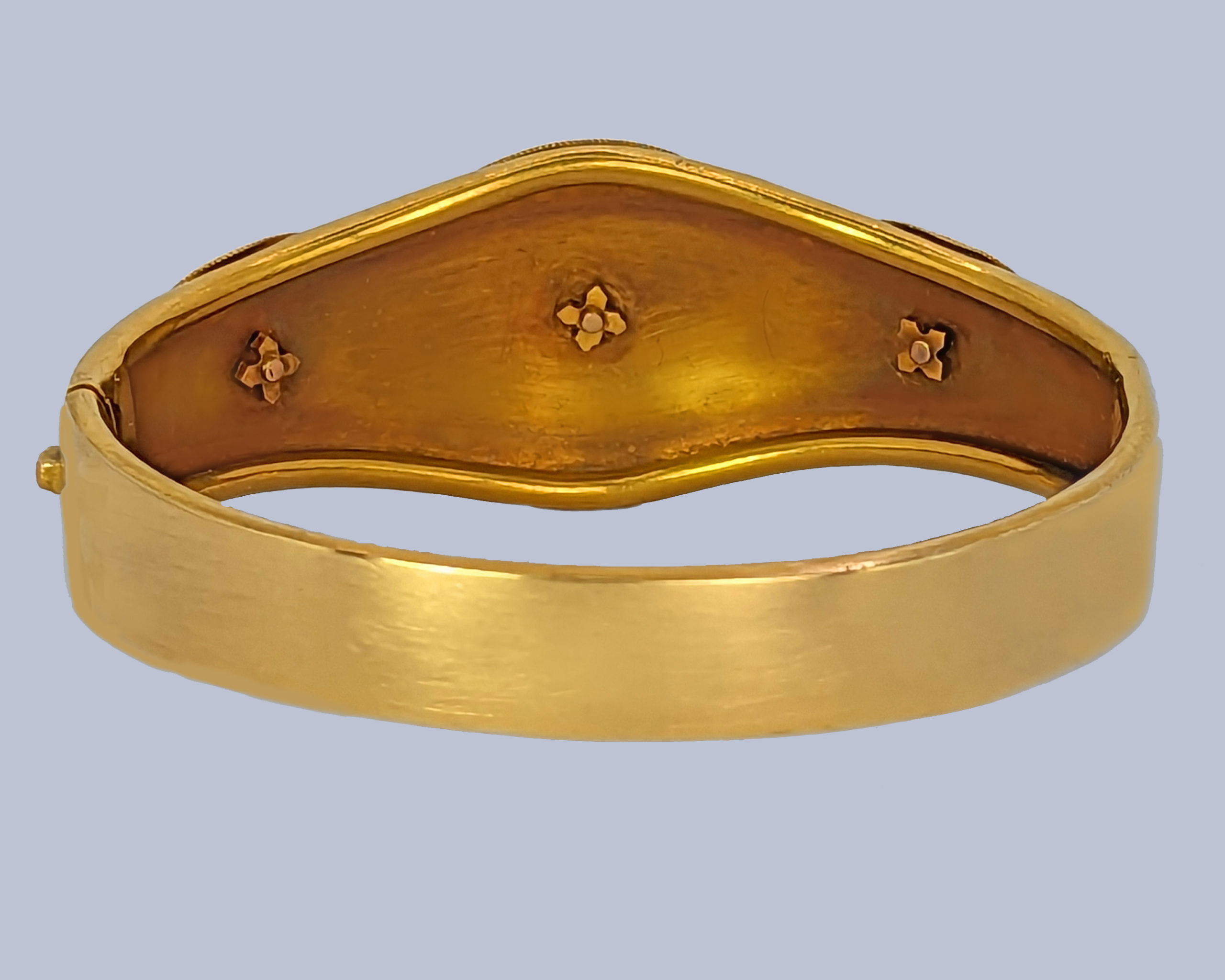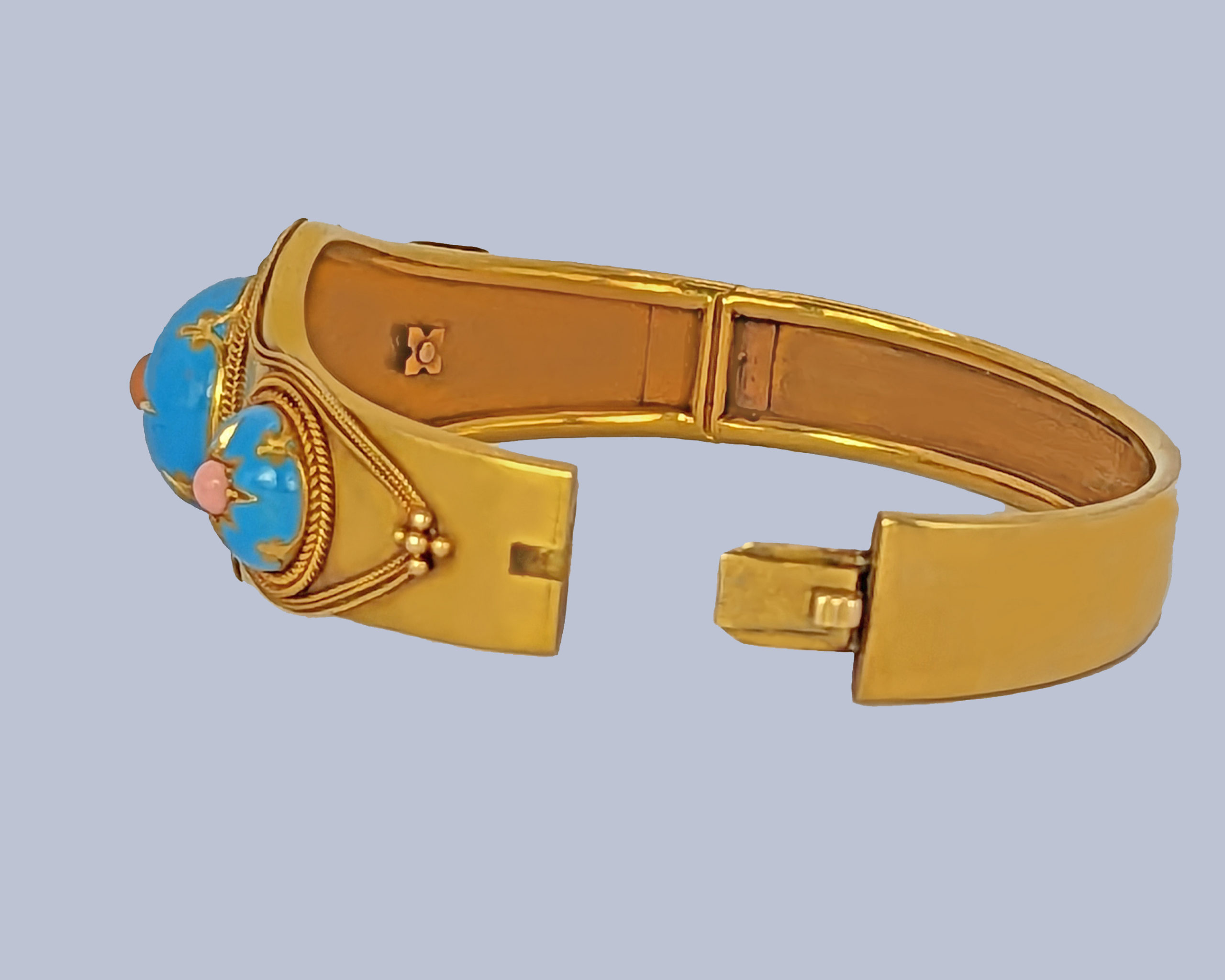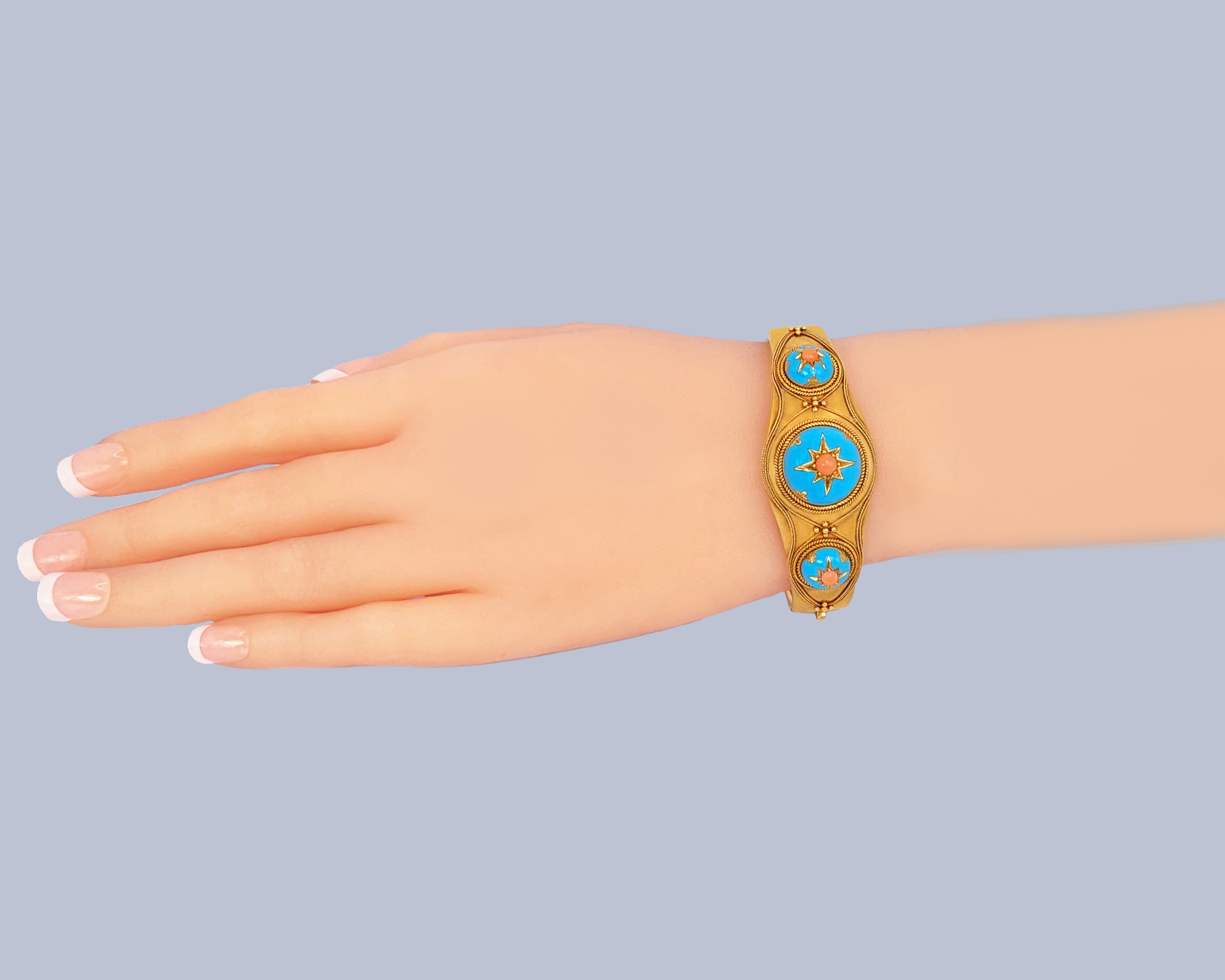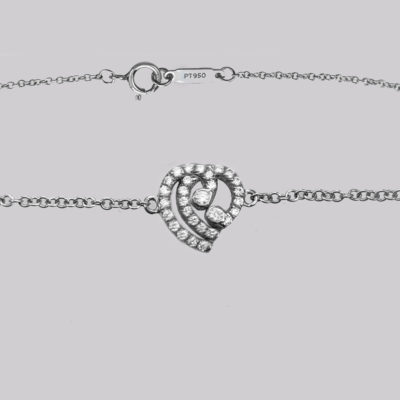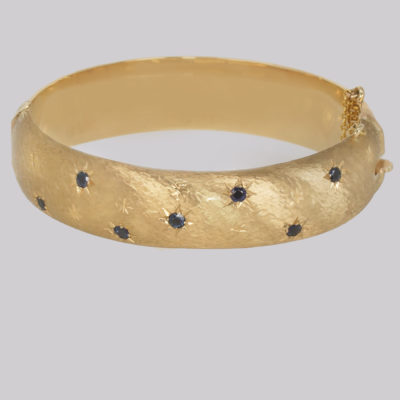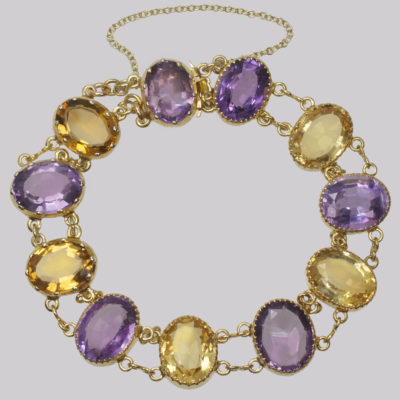Description
Set with three turquoise blue enamel domes centres with a beautiful pinky orange coral within a gold star
Further stylized gold Prince of Wales feathers around the edge of the blue enamel.
The domes are surrounded by elegant integrate decoration of gold rope work and beading
The hinged bangle secures with a push push box clasp
This 18 ct gold in the Etruscan revival style exquisite bangle looks stunning when worn
- 24.5 mm wide at front tapering to 10.5 at back
- Inside diameter from hinge to fastening 5.6cm (2.2″)
- Fits a wrist up to 17cm ( 6 3/4 “)
- Secure push box clasp
- Clasp stamped 18ct gold and the makers initials A & B
- Weighs 25 grams
- It is in exceptional original condition
- Dates to around 1870
- This 18ct gold in the Etruscan revival style comes in the presentation box illustrated
- Our ref: 23229
Coral: Of all the organic gems, coral was the most versatile and was much used in antique gold jewellery. Coral is formed from the skeletons of millions of small marine animals known as polyps. Each distinct colour of coral has a unique name. White coral is known as Bianco, bright pink as Rosa Vivo, and deep red as Russo. Coral was very popular throughout the 19th century. During the 19th century coral of all colours was used extensively with gold and other precious stones in rings, necklaces, bracelets and earrings. Dangle drop earrings were often worked with small facets and some etched and milled with criss-cross lines. Into the 20th century coral was mounted to contrast with precious and semi-precious stones such as chalcedony. onyx and rock crystal. A very important property of coral it that it can be worked and carved into many different and delicate shapes. Because of this coral was a great favourite of the Art Deco jewellers. The great jewellers famous for this were Cartier in France and Theodor Fahrner in Germany. Then after the war the batton was handed to the Italian jewellers such as Bulgari who produced many fabulous and highly individual pieces.
Caring for your Georgian coral jewellery: Coral is delicate and so needs to be cared for and kept away from dust. The bracelet should be stored somewhere safe and wrapped in tissue paper or soft cloth.


